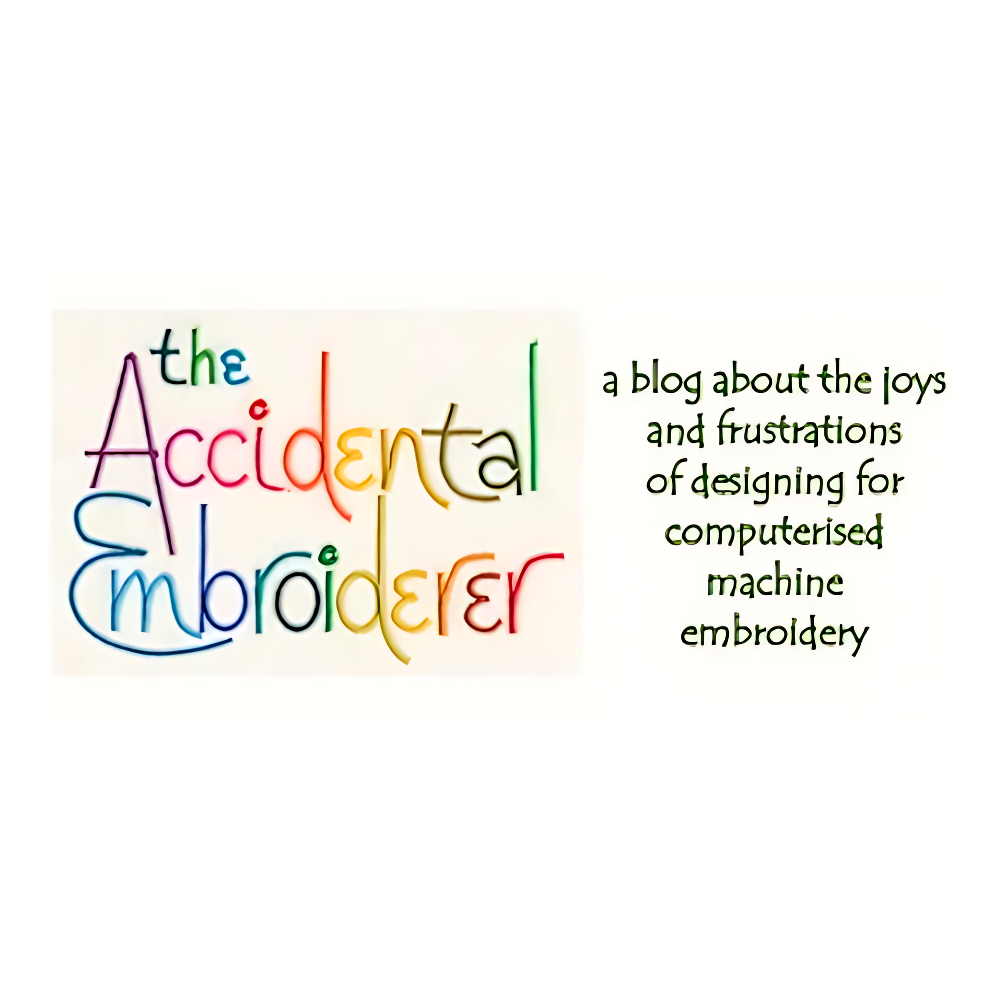After the woolly sheep, I’ve been experimenting with using embellished (felted) wool in more embroideries. This one is based on a cat design I did a long time ago. I just stitched an outline of the shape, embroidered the ears, and then removed the fabric from the hoop and spent an hour or so felting in scraps of grey and brown wool (=American yarn) to make the coat, and added cream-coloured wool for the paws and tail tip. Here’s the design after embellishing.

Wool felted on to the embroidered outline
The black spots were put in to help to align the design with the camera after embellishing, as usually it’s difficult to see the outline of the original embroidery through the woolly coat. The spots are done in low density stitching so they’ll be easy to remove after the final stitching is complete.
Like many embellishers, I’ve noticed that the back of the embellished fabric is just as interesting as the front. It’s very different: a lot more blended and subtle, and I might just repeat this design some time and try embellishing from the back of the fabric.

Embellished cat seen from the back
But this time I kept to the usual method of using the front as the “right side”. I re-hooped the embellished fabric, scanned it with the camera attachment and adjusted the position on the machine with the help of the black dots. Then, with a layer of soluble stabiliser placed over the design, I stitched the final stages, which consisted mostly of adding texture to the coat. I also overstitched the paws and tail tip, and added an overstitched “mask” over the face area so that the details of eyes and mouth would stand out more clearly

The cat after the final stitching
This was a very interesting and instructive experiment. Perhaps the most important thing that I learned was that embellishing invariably stretches, compresses and generally distorts the fabric, so that with the best will in the world it is impossible to align the embellished fabric exactly with the original outline. That doesn’t matter with this design, because it’s pretty unstructured, and it doesn’t matter much if the final stitching is a little bit off. But I can imagine designs where it would be essential to align the embellished fabric exactly with the embroidered details, and that might be a problem.
Another thing I’ve learned is that it’s difficult to work with a design with fiddly details: felting scraps of wool into small, complicated areas can be a problem. The head of the embellisher isn’t all that small and if you aren’t careful you’ll find yourself felting the background fabric, which results in areas of torn and lacerated fabric all around your design.
So, the best kind of designs for this technique are those that are free and loose, and with the felting confined to large, simple shapes. It sounds like animal designs would be the right way to go. I have a drawing of a hare that I think would work well with this technique, so I’ll see what I can do
